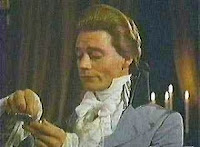
 Certain symbols change over time, none as drastically as the swastika. This infamous ideogram dates back a millennia over many cultures. In Hinduism it represented good luck, in Buddhism it's incorporated into the image of Buddha's foot. Seen in several Native American cultures, the swastika has a different meaning depending on the tribe. But none of them have negative connotations. So ubiquitous, the swastika can be seen as an example of man's collective unconscious. Obviously that changed after adopted by the Nazi party in the 1930s.
Certain symbols change over time, none as drastically as the swastika. This infamous ideogram dates back a millennia over many cultures. In Hinduism it represented good luck, in Buddhism it's incorporated into the image of Buddha's foot. Seen in several Native American cultures, the swastika has a different meaning depending on the tribe. But none of them have negative connotations. So ubiquitous, the swastika can be seen as an example of man's collective unconscious. Obviously that changed after adopted by the Nazi party in the 1930s. One of the most iconic symbols of my lifetime is the peace sign. I read somewhere that philosopher, activist Bertrand Russell was responsible for proliferation of the peace sign. That may be true, but he did not create it. That credit goes to a British graphic artist, Gerald Holtom. He came up with the idea for a Campaign for Nuclear Disarmament protest in 1958 in the UK.
One of the most iconic symbols of my lifetime is the peace sign. I read somewhere that philosopher, activist Bertrand Russell was responsible for proliferation of the peace sign. That may be true, but he did not create it. That credit goes to a British graphic artist, Gerald Holtom. He came up with the idea for a Campaign for Nuclear Disarmament protest in 1958 in the UK. The design comes from semaphore, the system of communicating across distances, usually at sea, by using flags in a set formation representing each letter. Using the semaphore for N (nuclear) and D (disarmament), he encased them in a circle.
The design comes from semaphore, the system of communicating across distances, usually at sea, by using flags in a set formation representing each letter. Using the semaphore for N (nuclear) and D (disarmament), he encased them in a circle.One facet of what created the turbulent 60s was protest against the Vietnam War. Those protests expanded the meaning of the peace sign to a symbol against all war, not just nuclear arms. So embraced by the counterculture, its use mushroomed. Like Topsy in Uncle Tom's Cabin, peace sign fashion and jewelry just growed up.
American businessmen being American businessmen, several tried to copyright the peace sign in the early 1970s. The courts decided that the symbol was universal and denied a copyright. Despite having lined the pocket of many a merchandiser, the peace sign still belongs to us all.
Despite the curmudgeonliness of old age and my natural aversion to popular culture, I still embrace the denotations and connotations of this symbol. Seriously, what's so funny 'bout peace, love and understanding? As ever - BB
"As I walk through this wicked world
Searchin' for light in the darkness of insanity..." Nick Lowe Peace, Love & Understanding









